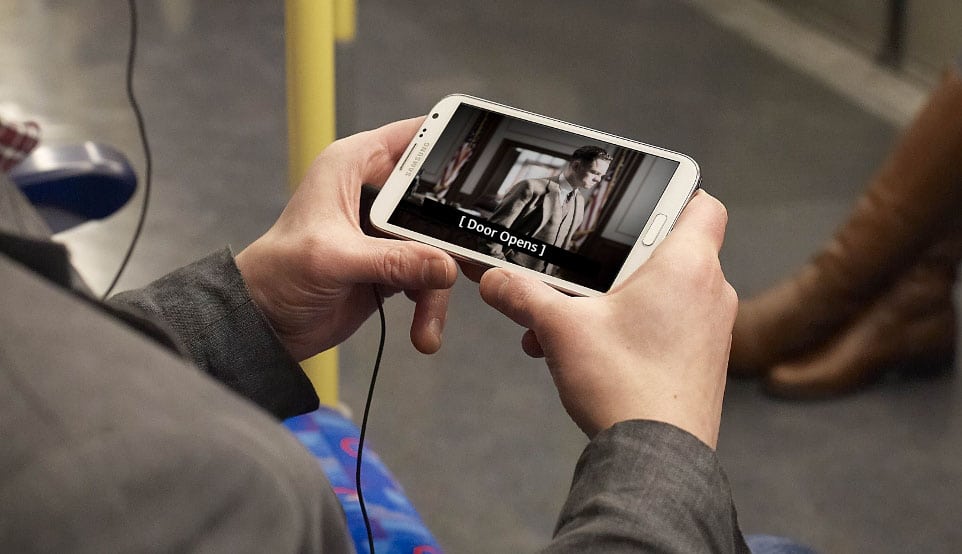The benefits and laws around Closed Captions. Closed captions are the visual display of the audio portion…

What Are Closed Captions And Why Caption At All?
Closed Captions Explained.
It is simple, captions are the visual text display of the audio portion of video or audio media programming.
Captions are native-language to the medium rather than a translation to another language. They are more commonly used as a service to help deaf and hard of hearing audiences, but there are many other benefits too.
Let’s examine both the laws and the benefits of using closed captions.
Captions and the Law.
Adding captions to video is important as it provides access to individuals who are deaf or have a hearing impairment. Captions are often used in places where it’s difficult to hear a TV program. More on that below.
On January 12, 2012, the FCC adopted already existing laws requiring captioned programs shown on TV to be captioned when re-shown on the Internet. These rules implement provisions of the Twenty-First Century Communications and Video Accessibility Act of 2010 (CVAA).
These laws may seem complicated, but they are not. Below are the highlights of the FCC requirements for closed captions. (Full FCC closed captions guideline here.)
- The rules cover full-length video programming. Video clips and outtakes are not required to be captioned when shown on the Internet. However, when a captioned TV program is re-shown on the Internet in segments, it must be captioned if substantial portions of the entire program are shown in those segments.
- Consumer-generated media (e.g., homemade videos) shown on the Internet are not required to be captioned unless it has been shown on TV with captions.
- Movies shown on the internet are not required to be captioned unless they have been shown on TV with captions.
For full guidelines with deadlines for closed captions, please read through the entire FCC closed captions guidelines here.
Here are a few links to consider when brushing up on your caption mandates:
- The Americans with Disabilities Act (ADA) Highlights and Overview
- IDEA overview and history
- Guidance from the U.S. Department of Education
- Section 508 Compliance Overview
- Summary of 508 Compliance Standards
- Section 508 Guide for E-learning and Multimedia Technology
- GSA Tutorials, Guidance and Checklists for multimedia
- Alliance for Technology Access
- Equal Access: Design of Distance Education Learning Program
- ADA, Title III Regulations
The Many Benefits of Captions.
There are many benefits to providing closed captions on your video content beyond hearing impairment assistance.
Captions assist people who don’t have hearing issues with context, understanding, and engagement. In a BBC video caption study, 70% of respondents said closed captions improved comprehension and 80% of those using captions had no hearing impairment at all.
- Ensure that everyone can view your video, including those with disabilities, speak in another language or find themselves in an atmosphere where they can not hear content clearly.
- Improve Video SEO by making your video easy for search engines to index.
- Increase retention and comprehension for your content. Providing visual and audio content in combination reinforces learning and cognition.
When people are able to comprehend your content you will increase user engagement and increase the likelihood they will watch the entire video. Here are some compelling stats:

- 20% of the audience has a disability.
- 40% more time spent watching video.
- 80% more people watch video to completion.
- Make videos accessible to English for 2nd language (ESL) viewers.
- Creating searchable video content.
To stay updated on captions, laws, and technology, join the cielo24 newsletter. Get started using captions for free.
Happy Captioning!




